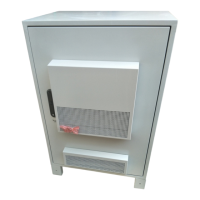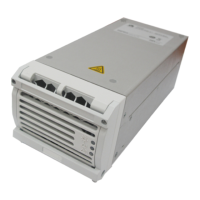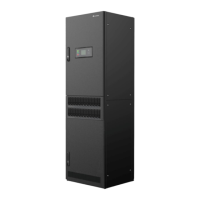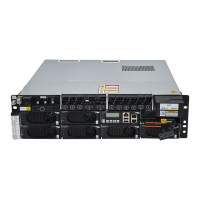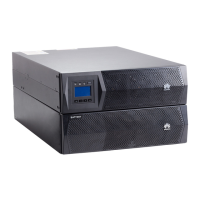Do you have a question about the Huawei TP48200A-HX09A2 and is the answer not in the manual?
Describes the DC power systems in terms of their features, configurations, components, and maintenance methods.
Identifies the target readers for the document, including sales engineers, technical support, and maintenance personnel.
Defines the symbols used in the document for DANGER, WARNING, CAUTION, NOTICE, and NOTE.
Introduces the TP48200A-HX09A2 and TBC300A-TCA2 outdoor power systems.
Lists the key features of the power system, such as AC input range, battery management, and network application.
Explains the operational flow of AC power conversion, battery charging, and system monitoring.
Shows the internal layout and components of the TP48200A-HX09A2 and TBC300A-TCA2.
Describes the AC Power Distribution Unit (PDU), including input and output units.
Covers the appearance, panel, and indicator descriptions of the rectifier module.
Details the System Monitoring Unit (SMU02B), including its appearance, panel, and indicators.
Describes the User Interface Module (UIM02C), including its panel and ports.
Covers general safety precautions for installation and maintenance of Huawei equipment.
Addresses safety concerns related to electrical operations, including high voltage and leakage.
Highlights the dangers of operating electrical devices in flammable or explosive environments.
Discusses essential safety precautions for handling, storing, and managing batteries.
Details safety measures and procedures for tasks performed at heights, including hoisting.
Covers safety precautions related to mechanical operations like drilling and handling sharp objects.
Addresses general safety precautions for equipment, including electricity and electrostatic discharge.
Outlines periodic maintenance tasks, their intervals, and checklists for system components.
Provides troubleshooting steps and possible causes for common system faults.
Explains methods for identifying faults in AC SPD, circuit breakers, rectifiers, and SMUs.
Provides detailed procedures for replacing various system components.
Details the prerequisites and step-by-step procedure for replacing a rectifier module.
Outlines the prerequisites and step-by-step procedure for replacing the SMU.
Lists the operating, transportation, and storage environmental parameters for the system.
Details the electrical characteristics, including AC input, DC output, and protection specifications.
Provides detailed specifications for the R4850G1 and R4850N1 rectifier models.
Describes the DC power systems in terms of their features, configurations, components, and maintenance methods.
Identifies the target readers for the document, including sales engineers, technical support, and maintenance personnel.
Defines the symbols used in the document for DANGER, WARNING, CAUTION, NOTICE, and NOTE.
Introduces the TP48200A-HX09A2 and TBC300A-TCA2 outdoor power systems.
Lists the key features of the power system, such as AC input range, battery management, and network application.
Explains the operational flow of AC power conversion, battery charging, and system monitoring.
Shows the internal layout and components of the TP48200A-HX09A2 and TBC300A-TCA2.
Describes the AC Power Distribution Unit (PDU), including input and output units.
Covers the appearance, panel, and indicator descriptions of the rectifier module.
Details the System Monitoring Unit (SMU02B), including its appearance, panel, and indicators.
Describes the User Interface Module (UIM02C), including its panel and ports.
Covers general safety precautions for installation and maintenance of Huawei equipment.
Addresses safety concerns related to electrical operations, including high voltage and leakage.
Highlights the dangers of operating electrical devices in flammable or explosive environments.
Discusses essential safety precautions for handling, storing, and managing batteries.
Details safety measures and procedures for tasks performed at heights, including hoisting.
Covers safety precautions related to mechanical operations like drilling and handling sharp objects.
Addresses general safety precautions for equipment, including electricity and electrostatic discharge.
Outlines periodic maintenance tasks, their intervals, and checklists for system components.
Provides troubleshooting steps and possible causes for common system faults.
Explains methods for identifying faults in AC SPD, circuit breakers, rectifiers, and SMUs.
Provides detailed procedures for replacing various system components.
Details the prerequisites and step-by-step procedure for replacing a rectifier module.
Outlines the prerequisites and step-by-step procedure for replacing the SMU.
Lists the operating, transportation, and storage environmental parameters for the system.
Details the electrical characteristics, including AC input, DC output, and protection specifications.
Provides detailed specifications for the R4850G1 and R4850N1 rectifier models.
| Brand | Huawei |
|---|---|
| Model | TP48200A-HX09A2 |
| Category | Power Supply |
| Language | English |
